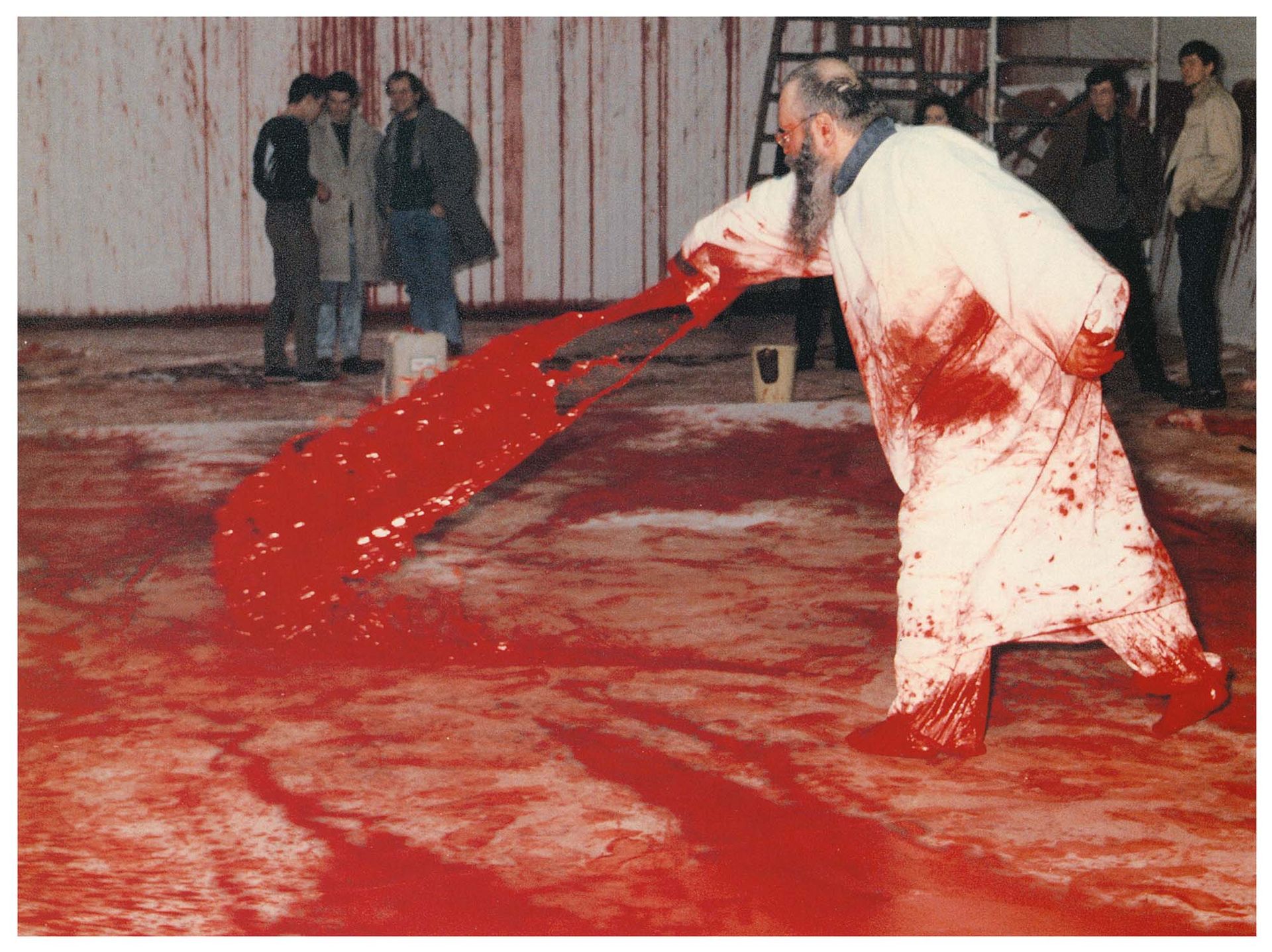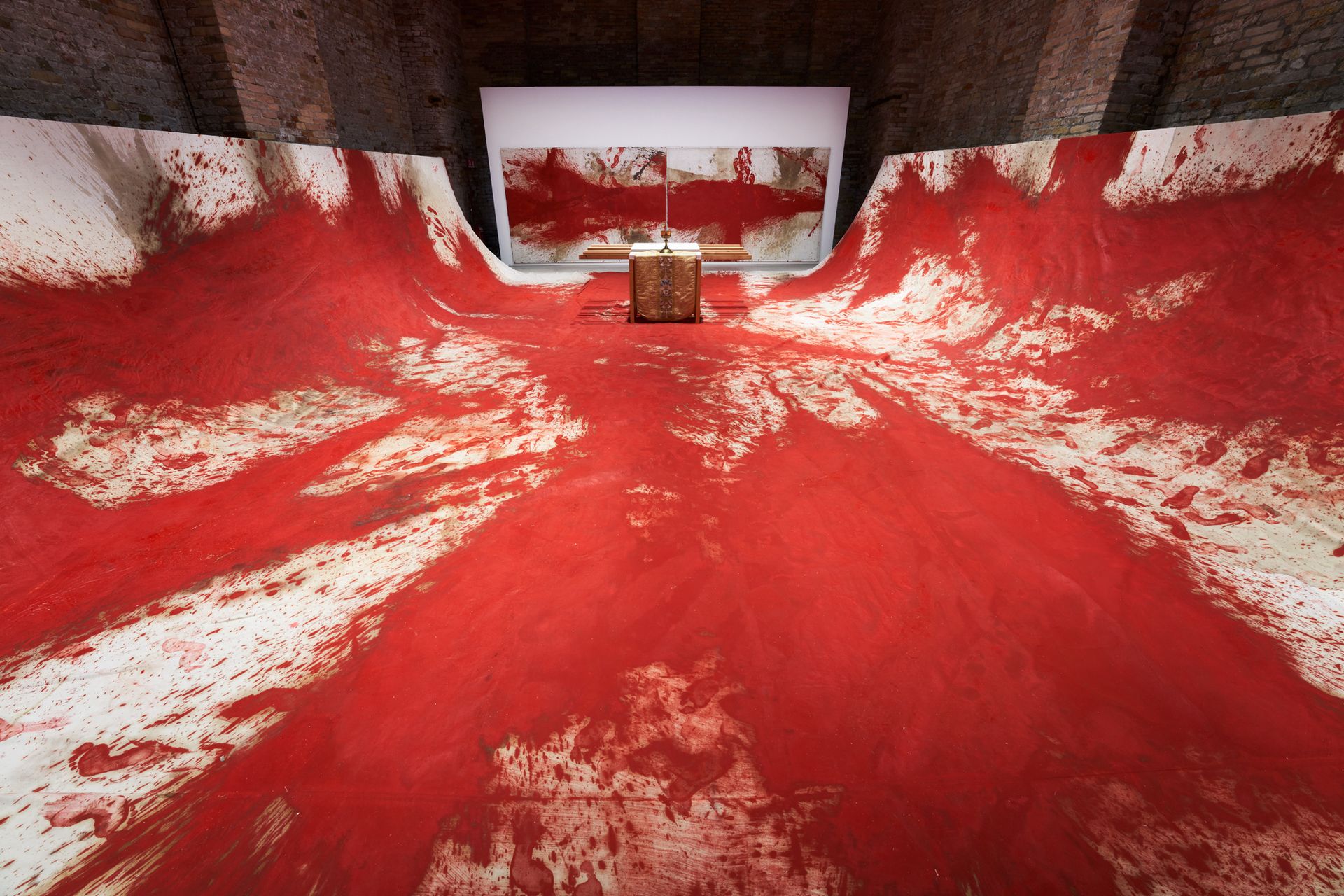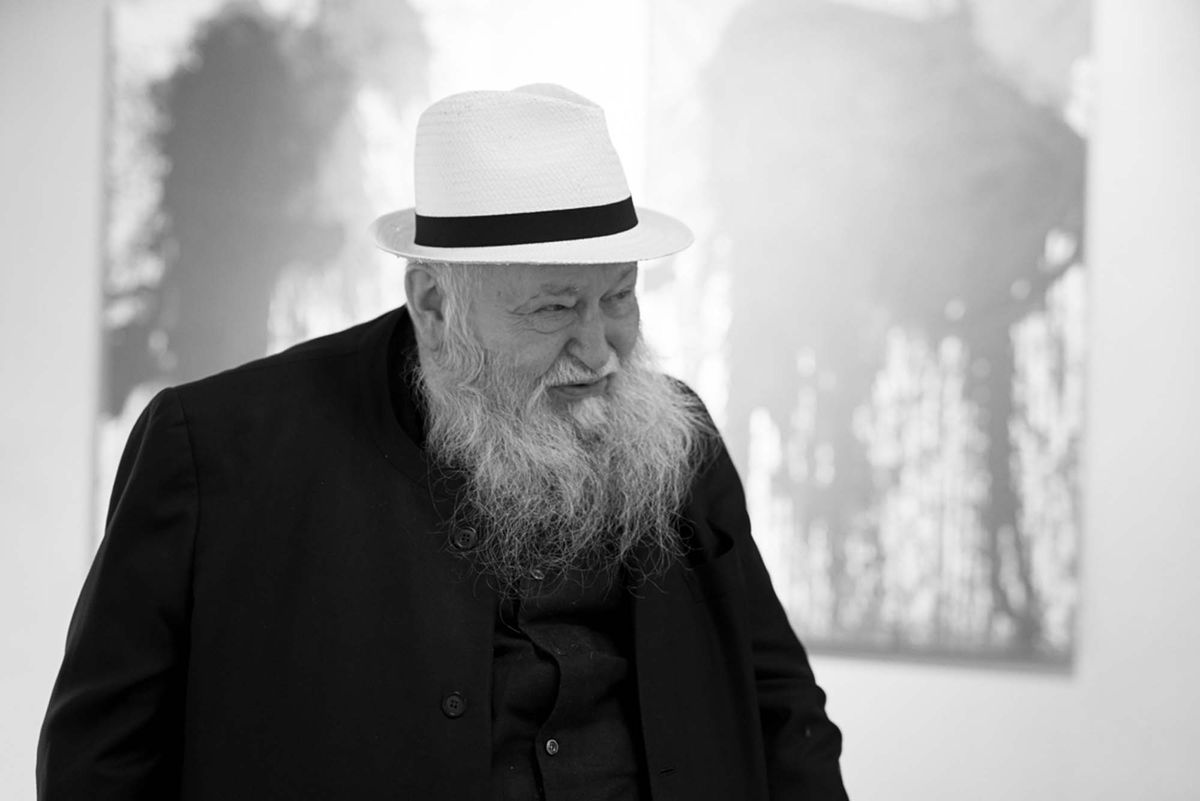Hermann Nitsch, the founding member of Viennese Actionism—a movement known for its violent, ritualistic performances that often confront moral taboos—died on 18 April at the age of 83. His death was confirmed to the Austrian press by his wife Rita Nitsch, who says the artist died following an unspecified “serious illness”.
An exhibition of his work presented by Zuecca Projects and the Austrian collector Helmut Essl, titled Hermann Nitsch’s 20th Painting Action, opened on Monday, the day of his death, in Venice concurrently with the 59th Venice Biennale. "To me Hermann Nitsch was one of world’s greatest artists, and I am thankful for the profound impact his work has had on me and so many others," Essl says. "The fact that Hermann passed on the day that I show him my greatest appreciation with the opening of his 20th Painting Action during the Venice Biennale makes me [want to] do even more of what I’ve started in Venice right now—bring his art even closer to the world."
Nitsch was born 23 August 1938 in Vienna, just months after the country became occupied by Hitler’s Nazi regime. “I had to greet peers with ‘Heil Hitler’ when I was in elementary school around 1943, and then two years later, the country was liberated,” he told Vice in 2010. “Between 1943-45 I experienced bombing raids every day as a child. My father was killed in Russia. The war turned me into a cosmopolite and opponent of all nationalisms and all politics while just a schoolboy,” he wrote on his personal website.
His self-proclaimed lack of effort led to his expulsion from grammar school, though his capacity for drawing allowed him to study painting and design at the Higher Federal Institution for Graphic Education and Research in Vienna. He also had a strong interest in literature, theatre and classical music. In 1958 he took a job as a commercial artist at Vienna’s technical museum, and it was in a studio given to him for this role that he began conceiving scores for what would become the Orgies Mysteries Theatre, an ongoing series of theatrical productions which continue today.
“I moved into a large studio there and was able to work a lot on the scores of the [Orgies Mysteries] Theatre,” he wrote of this time. “I tried to write a primal drama lasting 6 days that condensed ancient tragedy, Shakespeare, Faust, Kleist and Wagner, and express a common denominator. Reading Freud and Jung, I wanted to integrate redemption myths, seen and interpreted from a depth psychology perspective. The primal drama used language. The actors were to speak their roles.”

Hermann Nitsch, 20th painting action, 1987, Secession, Vienna. © Hermann Nitsch. Photo: Heinz Cibulka
These productions, central to Nitsch’s oeuvre, were known to contain the likes of animal slaughter and the repurposing of blood, entrails and carcasses throughout, as well as loaded Christian iconography, sexual and sado-masochistic imagery, and other ritualistic motifs that aimed to push the senses to their most heightened states.
"With his Orgies Mysteries Theatre, Hermann Nitsch created a unique cosmos, a great cultural collage, superimposing religions and myths on top of one another and fusing all the arts, a true Gesamtkunstwerk that will stand the test of time," says Roman Grabner, a curator at the BRUSEUM-Neue Galerie Graz who served as a consultant on the new Venice exhibition.
Some iterations of these performances included as many as hundreds of performers at a time, in addition to audience participation. Nitsch presented over 100 Orgies Mysteries Theatre performances throughout his life.
“My work conveys every shade of emotion: love, anger, ecstasy and even pain. The history of art, after all, has always celebrated pain; think of Greek tragedies or the Passion of the Christ,” he told Artforum in 2018. “Admittedly, this kind of intensity is difficult to describe in words. But I do not mistake this particular kind of intensity for shock. Shock is related to mass media. Intensity goes much further and deeper than shock. Intensity relates to catharsis; through catharsis, one reaches a more purified space of consciousness.”
Such endeavours were, unsurprisingly, not without controversy. Nitsch was arrested multiple times for actions related to Orgies Mystery Theatre performances, and at one point he was expelled from Italy for disemboweling a sheep. In 1988, on his first visit to Australia, police seized video tapes from his exhibition of blood paintings at the seventh Biennale of Sydney. In 2015, the Museo Jumex in Mexico City canceled an exhibition of the artist’s work. And as recently as 2017 there were large protests over a Nitsch show in Tasmania—though they didn’t stop some 900 ticket-holding visitors from attending.
In 1960, the early performances led to the “action paintings”—paintings in which the material is splattered and sprayed across the canvas with an intensity that mimics the live productions. By 1963, Nitsch had stopped making these paintings, though he returned to them in the early 1980s and they remained a key part of his practice.

Installation view of Hermann Nitsch’s 20th Painting Action in Venice Photo courtesy Zuecca Project Space
In 1971, Nitsch purchased the Prinzendorf Castle on the Zaya River in Lower Austria, where he lived, worked and staged performances for the rest of his life. In 1998 he conceived one of his largest-ever Orgies Mysteries Theatre productions at the castle: 6-Day-Play. The work contained roughly 500 performers and, as Nitsch wrote, “three orchestras, a chamber music group, a choral school, a large mixed choir, a kitchen, a carpent[er], a butcher, doctors and even lawyers were needed”. As the title implies, the performance lasted six days. Pace Gallery, which began representing Nitsch earlier this year, announced that the work will be re-staged at Prinzendorf Castle this upcoming July.
“Today the world lost a pioneering artist who redefined performance and painting through his visceral and existential work, which will continue to live on and continue to inspire generations of artists to come,” Marc Glimcher, Pace’s president and chief executive, says. “His passing comes at a poignant time as we mark his achievement with an exhibition in Venice, that we hoped to celebrate with him.”
There are museums dedicated to Nitsch's work in Mistelbach in northeastern Austria and in Naples, Italy.
- Hermann Nitsch’s 20th Painting Action, until 20 July, Oficine 800, Fondamenta S. Biagio, Giudecca, Venice.


